How did Lexus take the fine qualities of its existing UR family V8 engine and enhance its personality to achieve the “limitless depth of power, response and sound” expected of our first F car?
Let’s examine the engineering and performance measures behind the phenomenal high-power 5.0-litre V8 found in the Lexus IS F.
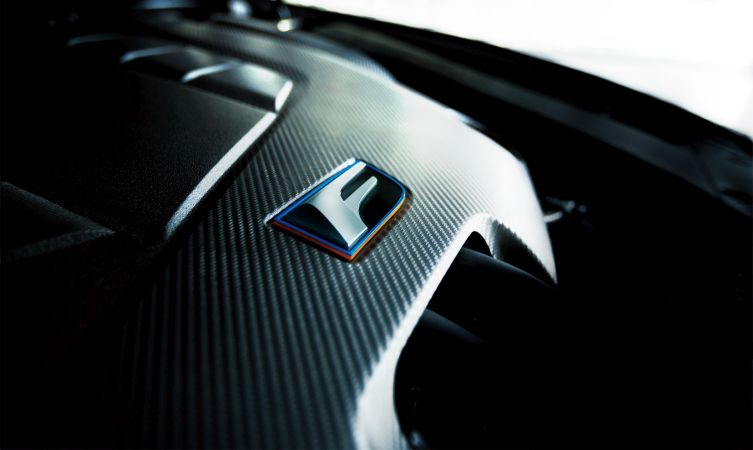
Lexus IS F V8: smooth operator
Known internally as the 2UR-GSE, the naturally aspirated 5.0-litre V8 engine installed in the Lexus IS F was co-engineered with Yamaha. It was developed as a high-performance derivative of the 32-valve, quad-camshaft UR-series engine range found in the fourth-generation LS 460 and LS 600h. Its brief was to deliver “limitless depth of power, response and sound” in addition to retaining the fuel economy, low emissions and excellent output of its siblings.
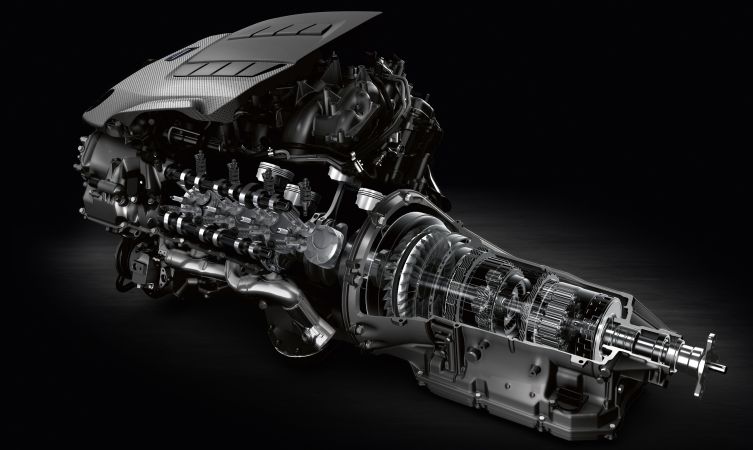
The engine was based on a die-cast aluminium cylinder block with steel liners. Its two banks of four cylinders were arranged at a 90-degree angle, while the forged crankshaft at the bottom of the V rotated around five main bearings.
But rather than secure each main bearing cap with two heat-treated steel bolts, as is the traditional practice in this sort of engine, Lexus used a four-bolt technique usually reserved for race engines (see drawing below). What’s more, these were no ordinary high-tensile fixings; they were engineered to stretch a precise amount in length as the bolt was tightened to a specific torque. Such a calculated stretch provided a consistent clamping force to secure each cap to the block.
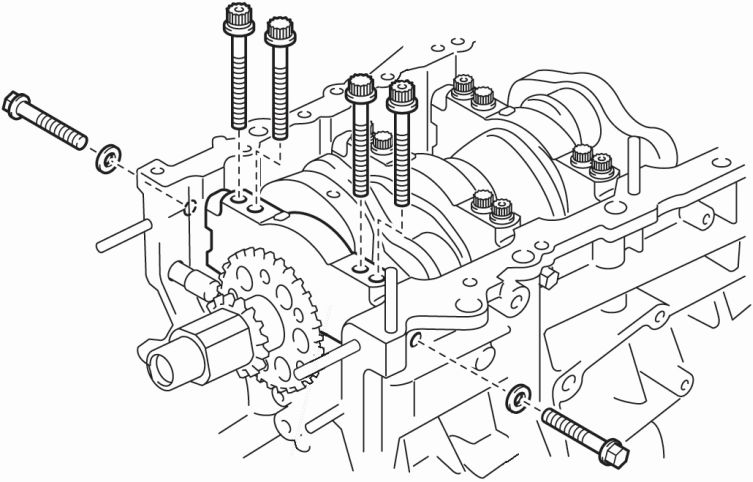
This was an unusually robust, perfection-seeking measure. But it was the most effective means of resisting lateral vibrations generated at the crankshaft by the alternating firing of cylinders on opposite banks of the engine. It minimised potential noise and vibrations at their source, resulting in exceptionally smooth running and incredible durability.
Lexus IS F V8: coming to a head
In developing the 2UR-GSE, the engineers paid particular attention to the intake efficiency of the cylinder head at high engine revs. The UR’s highly regarded direct injection and electrically adjusted intelligent variable valve timing technologies were retained but the ports were redesigned and lightweight materials employed for the valve train.
The whole powertrain felt instantly responsive to driver inputs
More specifically, the intake manifold was redesigned to deliver a dual intake system, where the primary intake passage supplied sufficient flow ability to handle most of the engine’s breathing needs. But at revolutions above 3,600rpm, a secondary intake passage opened, which lowered the intake pressure loss and increased the engine’s ability to breathe. The intake ports were also machined from their original peanut-like shape into a straight-edged capsule form to improve intake efficiency. This optimised the port’s cross-section and improved the intake air flow coefficient by 11%.
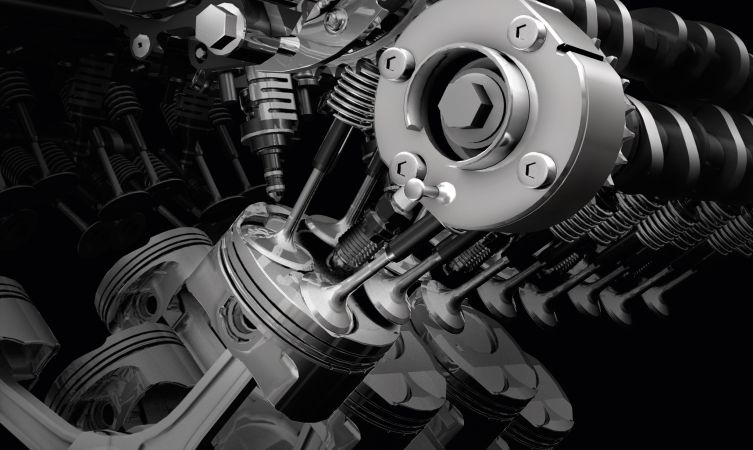
With more air being drawn into the engine, it was necessary to proportionally increase valve lift. This was achieved by switching the valve material to titanium, a material that was not only stronger but 40% lighter to reduce the inertial mass. In total, the 2UR-GSE offered up to 9% greater valve lift, while lowering the valve spring load by 20% helped to reduce friction across the valve train.
The measures mentioned above, plus a 200rpm increase in rev limit, delivered a significant 28bhp increase in power, linear torque characteristics, and the feeling of “limitless depth of power” required by the brief.
Tuned for response
To fulfil the brief for the engine to feel responsive, it was essential to minimise the time differential between the throttle being depressed and the appropriate volume of air and fuel being delivered into and consumed by the engine.
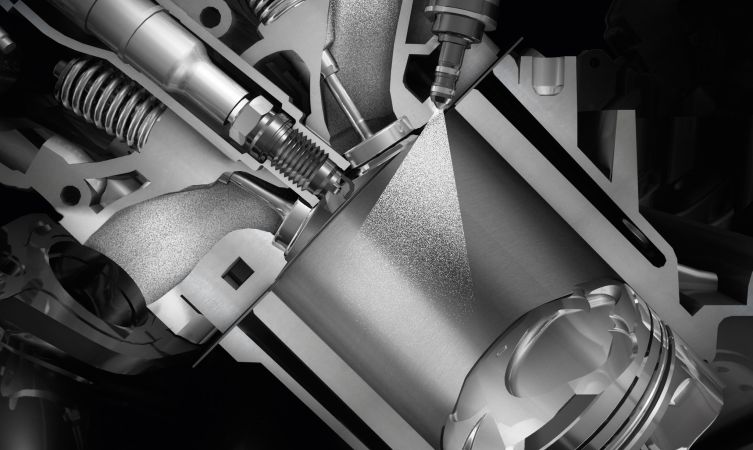
For the 2UR-GSE, a 30% shorter response time was primarily achieved by modifying the shape and volume of the intake manifold so that it could be emptied and replenished more rapidly. A free-flowing air filter ensured there were no restrictions at the entry point, while fluid analysis helped create the intake manifold plenum and the short but equal-length intake runners feeding each port.
In addition, careful tuning of the transmission and engine control systems – including the world’s fastest-reacting upshift, and rev-matching downshift – meant the whole powertrain felt instantly responsive to driver inputs.
The sound of success
The IS F’s V8 was carefully tuned to produce three distinct aural ranges. Its atmospheric bass sound centred on the exhaust note recorded in the low-speed range from idle to 3,600rpm. From this point and to 4,200rpm, coinciding with the opening of the secondary intake passage, intake roar was tuned to become the most vocal element. Towards the top end of the intake range, it was laced with a clear mechanical scream that quickly became the most prominent sound to the 6,800rpm rev limiter.
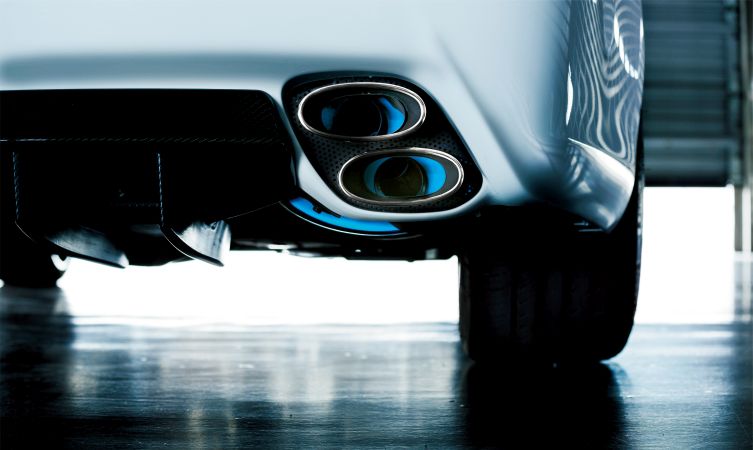
The purity of each element was carefully engineered so that possible sources of audible harshness were tuned out. This included the design of the exhaust system, the supporting position of the cam journal, the use of titanium intake valves, and an intake plenum layout that offered less resonance.
Lexus IS F V8: further applications
From its introduction in 2008, the venerable 2UR-GSE has gone on to power the Lexus RC F and GS F models, as well as the flagship LC 500 coupe. During that decade it has been subject to further refinements that have resulted in a headline output of 471bhp at 7,100rpm and the ability to switch between Otto and Atkinson combustion cycles to optimise efficiency at cruising speeds.
All information was correct at the time of publishing.



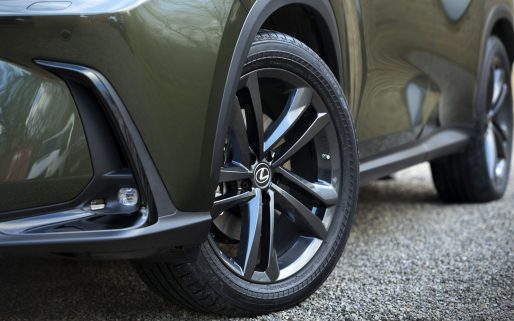
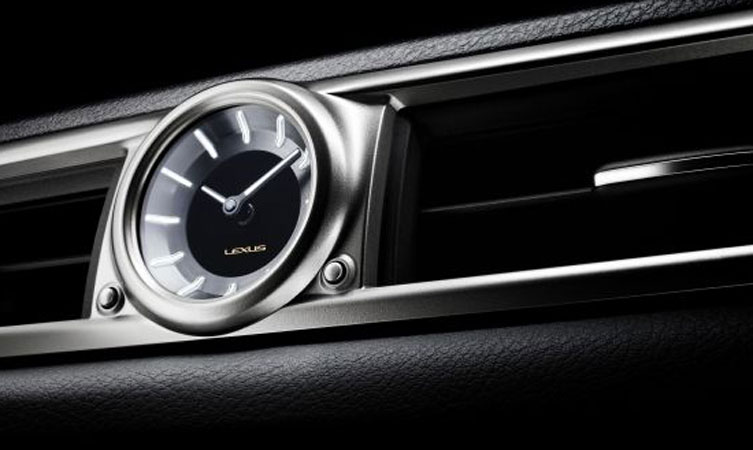
I have a lexus isf, the best and most respected car I’ve ever drove. Sound and response is superb. What I have is no longer stock now, but bye bye mustang’s and cameros
Hi King,
Thanks for getting in touch with us. It’s great to hear how much you’re enjoying your IS F. You can find out more about the history of the IS here: https://mag.lexus.co.uk/history-of-the-lexus-is/
Thanks.
Ha HA! I love it!
i am a great lexus v8 fan and would like to know how much reasonable boost could be supplied to the 2ur gse without any major problems is has been done but imfo is scarse the rotax supercharger looks optimal because of its physial size and cost it tells me it needs to supply 1.5 bar boost to achieve 550/600 hp will this be too much??
Hi Greg,
Thanks for getting in touch. It’s great to hear you’re such a fan of the V8.
As you are referring to modifying the engine, this is taking it away from the standard spec provided. In this case, we therefore cannot advise of any specific values, nor do we publish such information anywhere.
Thanks.
Cool quick read. I found this article while searching for some more info to further validate my ISF acquisition haha.
What diffuser is installed on the white ISF rear view picture?
Hi there,
Thanks for getting in touch.
A Lexus IS F is certainly a sound investment, with prices holding well over recent years.
Sorry, these are old images, supplied by Lexus International and we don’t have any further information on them.
Thanks.
Hi There,
I just a Lexus ISF 2010 model, its my first time to drive a Lexus 5L V8
it sound really nice and the power i have no words……………………..
Sanjay
Hi Sanjay,
Thank you for your comment. We are so pleased to hear that you are loving the Lexus IS.
Have you had any exciting adventures so far?
You can find out more about the IS and its history here: https://mag.lexus.co.uk/history-of-the-lexus-is/
Thanks.
Hi great article….I own a 2010 ISF it’s by far the fastest accelerating car I’ve owned…and it handles very well.love to drive this true 4door sport car..
Hello Samuel,
We are so pleased to hear that your ISF is serving you so well.
We wish you many more happy miles.
Thanks.
Only direct injection? no port injection used similar to D-4S on other Toyota engine?
Hi I’ve owned a Lexus is200 sport & a is250 sport just bought a isf 2011 model & traded my is250 sport in part exchange & I thought the other 2 models were excellent & couldn’t get any better i was a bit weiry about getting an automatic because I’ve always had manual cars but how much as the isf changed me even my wife as never driven an automatic in her life & she loved it the performance is unbelievable.
It has both
I love everything Lexus makes, I have had at least 6 Lexus models over the pass 15 years or so. I have to admit that owning one of the most sought out Lexus out there the LFA, the ISF, the LS460L, the IS350C, the IS250, The RX400H, & the RX350. I got to tell you something, nothing on earth beats the sounds and the feel of the LFA. (Period) but I know that there are so few of these magnificent pieces of perfect Engineering available, but for the rest of the people… my second favorite is my ISF hands down it is something else to feel how the bucket seats hugs you in place and you push that pedal and you feel amazing! Not to mention you can find the ISF at a very affordable price. (Used of course)
Final note, you can never go wrong in owning a Lexus, they are just solid and reliable cars.
Hello Jay,
Thank you so much for your kind words and for your loyalty over the years.
Do you currently own a Lexus?
Thanks.
I just tracked down a 2011 in the states with ~13k miles and I doubt I will ever let it go. I don’t think there is a better high output V8 from any manufacturer. Name one and I’ll point to longevity. I just need it to stop snowing. The person I’d truly like to thank is Matsumoto san for designing this daily driving + weekend motorsports masterpiece.
Hi
Looking at LEXUS IS-F 5.0 V8 2UR-GSE FULL ENGINE for a 4×4 off road verhicle progect.
Ideally I would prefer a manual gearbox – is there one avaliable for this engine ?
Now the more difficult bit is there a transferbox to fit this engine which can be suitable for 4 wheel high & low gearing either to fit on a manual gearbox or a automatice if no manual box.
Regards Bryan
Hi Bryan, thanks for your comment.
We are unable to provide technical advice here, your local Lexus Centre is best placed to advise further and provide information on the parts available.
Thanks,
Lexus UK
I’ve had my 2012 obsidian ISF for almost a year now and driving it is an absolute pleasure every single day. It’s far from stock as I’ve added PPE headers and XForce exhaust. These cars are absolute beasts and I hope to have mine for quite some time.